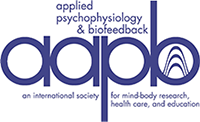Current Practice of Neurofeedback: Where We Are and How We Got There
This article tracks the evolution of the practice of neurofeedback over the past quarter century from the perspective of services offered at a private clinic. It describes why and how the authors changed their practices from interventions including medication, psychotherapy, and tutoring to biofeedback interventions. Their evolving practices required complex assessments including single- and two-channel quantitative electroencephalograph (QEEG) and later 19-channel QEEG combined with evoked potentials, heart rate variability, continuous performance testing, and neuropsychological assessment. The article stresses that interventions require a multimodal approach. The neuroanatomical rationale for combining neurofeedback and heart rate variability (HRV) training is provided as well as a discussion of how a systems theory of neural synergy helps explain how neurofeedback influences brain networks. Assessment procedures are described in some detail because that information is used to develop effective interventions that typically combine neurofeedback (single-channel or LORETA Z-score neurofeedback, as indicated) with HRV training. The authors stress using evidence-based approaches, basing intervention on assessment, and keeping current with new developments in applied neuroscience.

Illustration in graphic form of how neurofeedback and heart rate variability affect the same central structures. (Figure from The Neurofeedback Book, second edition, used with permission.)

Illustration in tabular form of how neurofeedback and heart rate variability affect the same central structures. (Figure from The Neurofeedback Book, second edition, used with permission.)

Summary of multifaceted assessment parameters.

Spectral array based on data from a 6-year-old boy.

Single-channel profile of 2- to 35-Hz activity: anxious, depressed, ruminating patient. Single-channel recording, eo, at Cz. The source of the spindling Beta was the anterior cingulate gyrus, Brodmann area 24.

Illustration to show the similar results from 19-channel and single-channel assessment.

Example of two graphs from a 19-channel quantitative electroencephalograph. Data are shown from the eyes-open assessment using the Neuroguide program. Top graph displays absolute amplitudes on y-axis, and the x-axis shows frequencies from 2 to 30 Hz. Bottom graph has Z-score comparison on the y-axis and frequencies on the x-axis. You can observe a high 4–8/8–12 Hz ratio, which should decrease with recovery.

Illustration to show coherence measures between Brodmann area 30 and other Brodmann areas pre- and post–LORETA Z-score neurofeedback.

Training screen combining neurofeedback with heart rate variability training.

Illustration to show progress over 16 LORETA Z-score neurofeedback (+ heart rate variability) sessions.

Illustration from Evoke Neuroscience with permission.

Michael Thompson

Lynda Thompson
Contributor Notes
